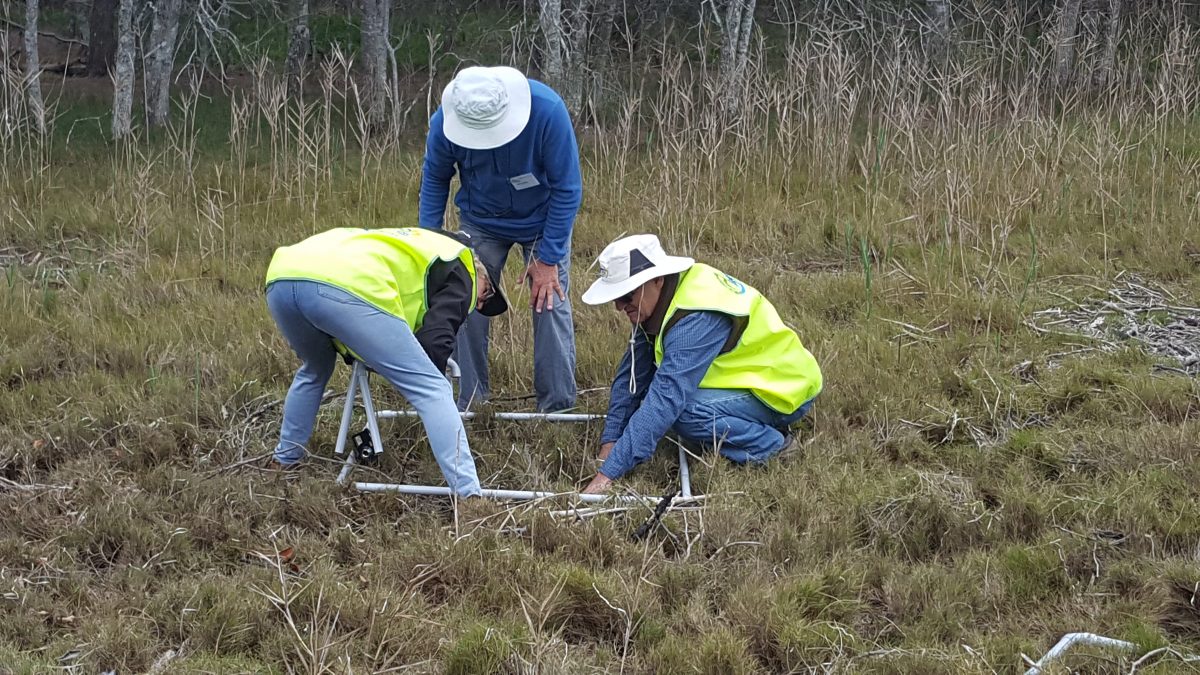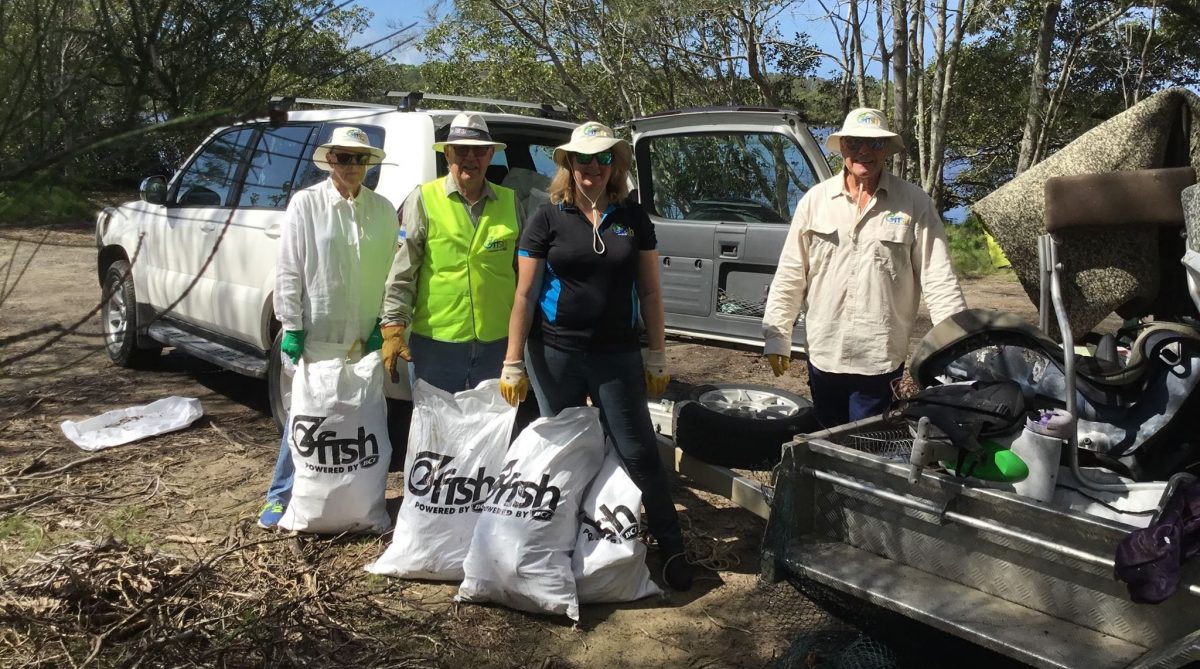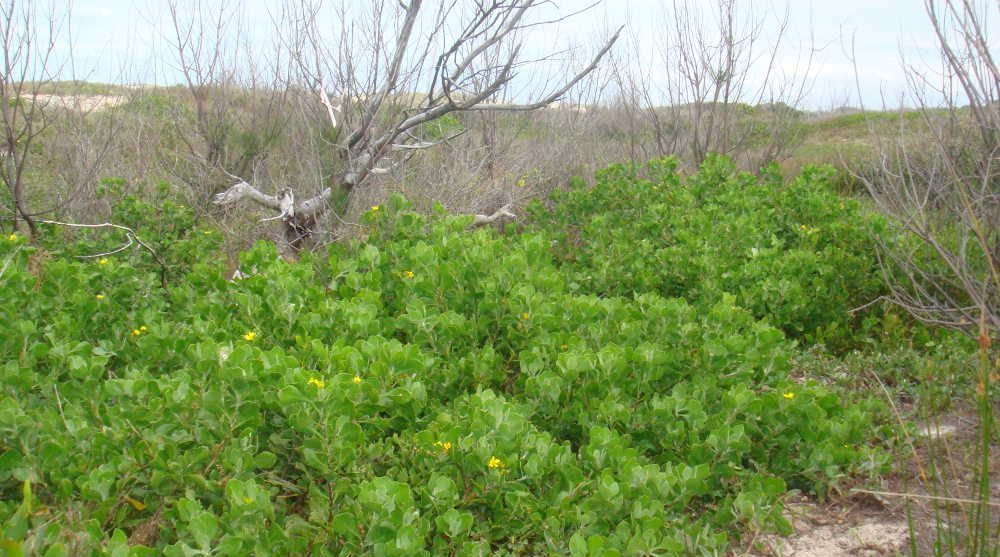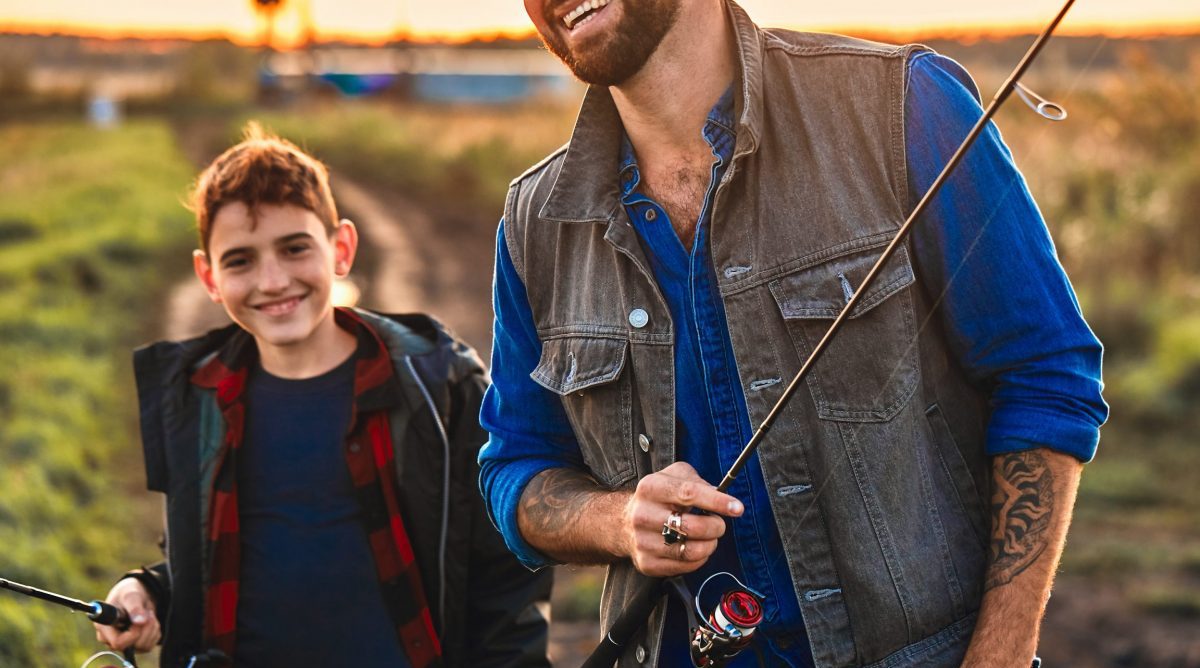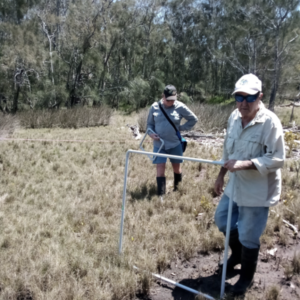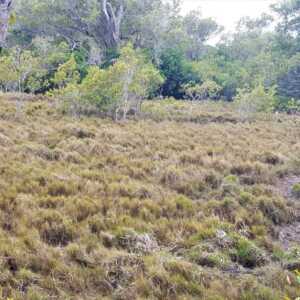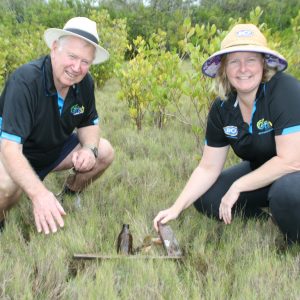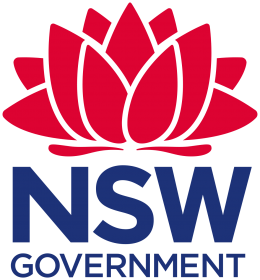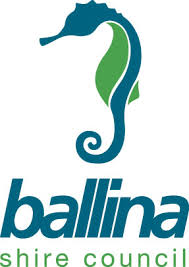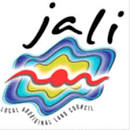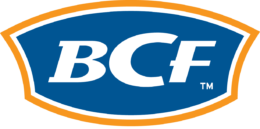APRIL 2022 | How and why we monitor saltmarsh
Saltmarsh are an important element to our coastal ecosystems and are undervalued for the benefit they bring our local waterways. Saltmarsh acts as a buffer system between our salt and freshwater systems and can withstand the salinity of the salty soils near our coast. Saltmarsh and mangroves work as a team protecting our coast and helping support our fisheries. Mangroves establish at a lower elevation than the saltmarsh. Where there are mangroves, there is saltmarsh only a few feet away. The ecosystem provides an essential coastal resource by reducing erosion and storm protection. Saltmarsh and mangroves also reduce the amount of CO2 in our atmosphere through carbon sequestration.


